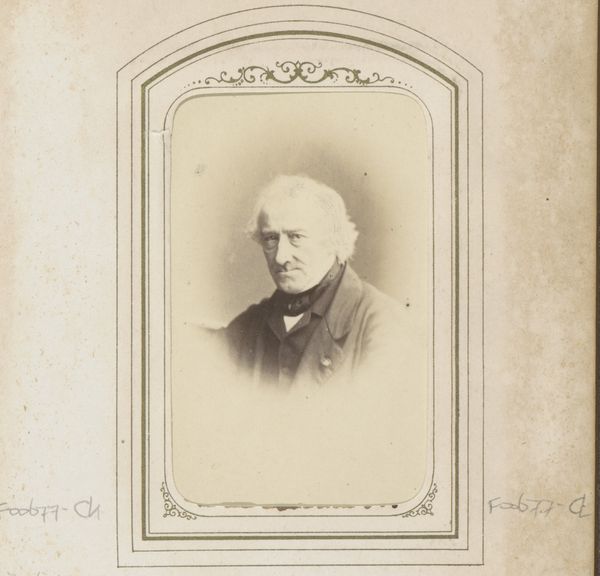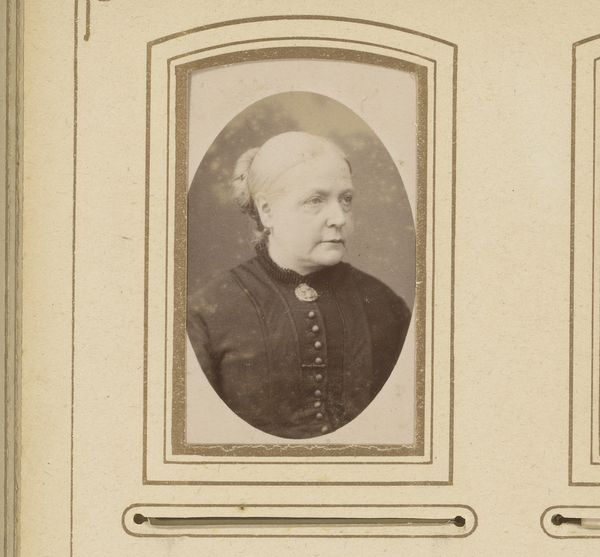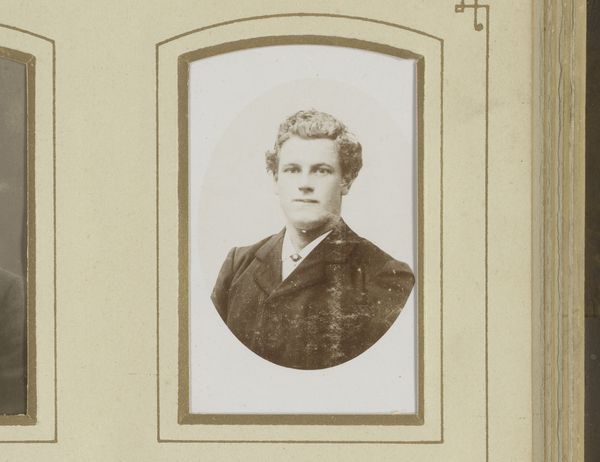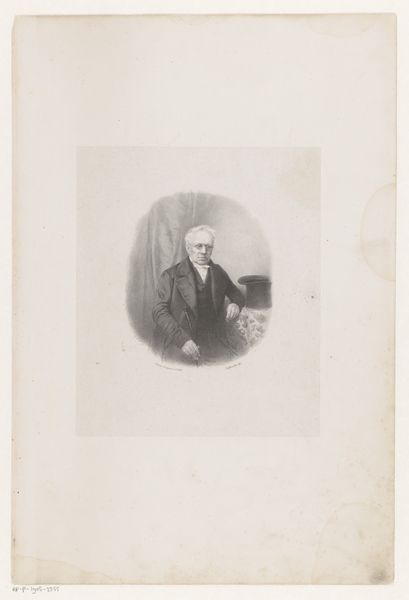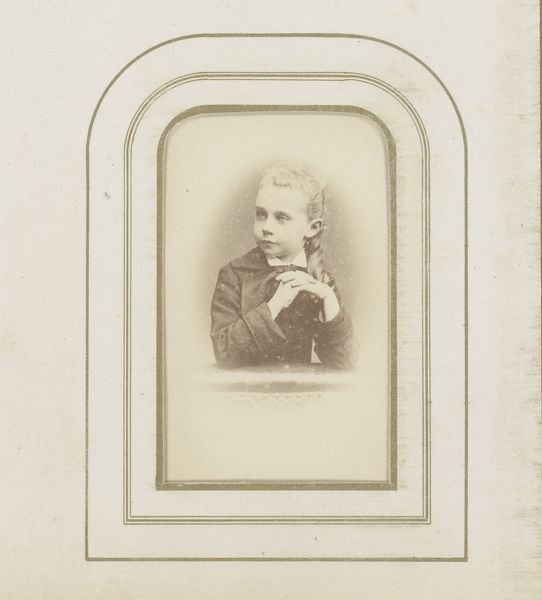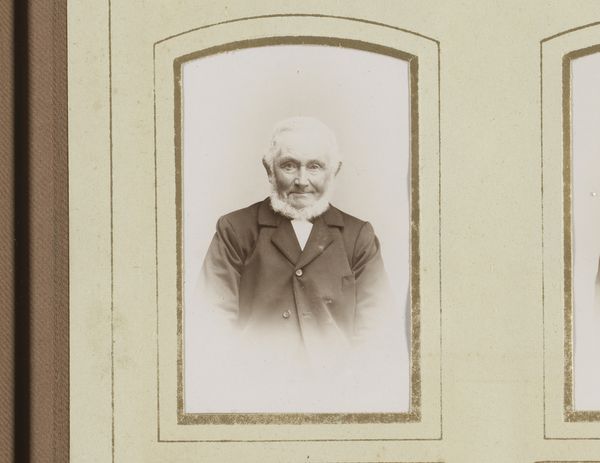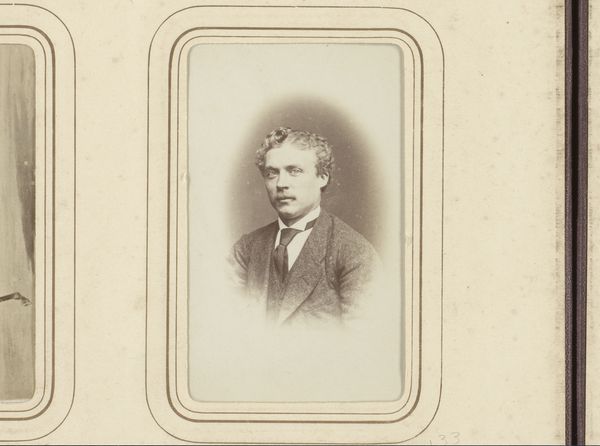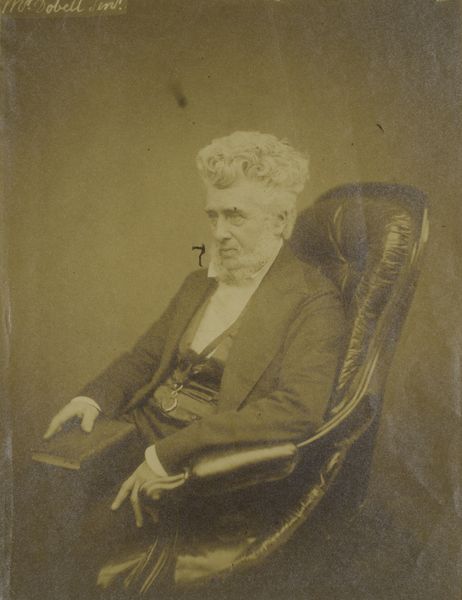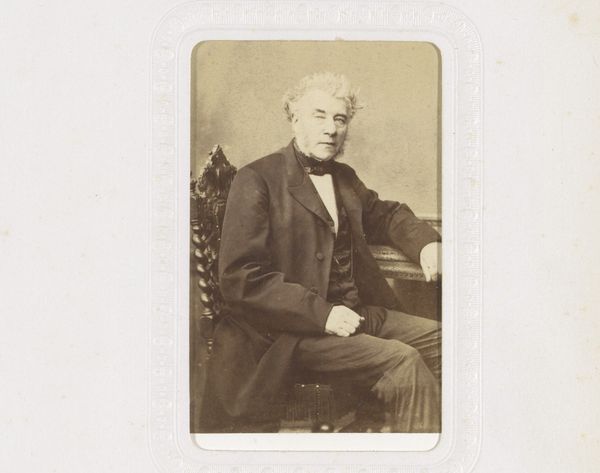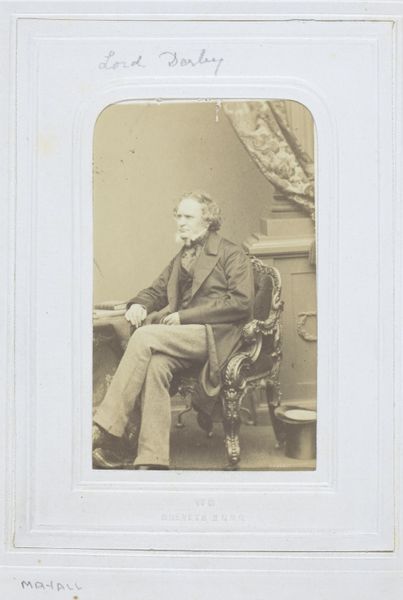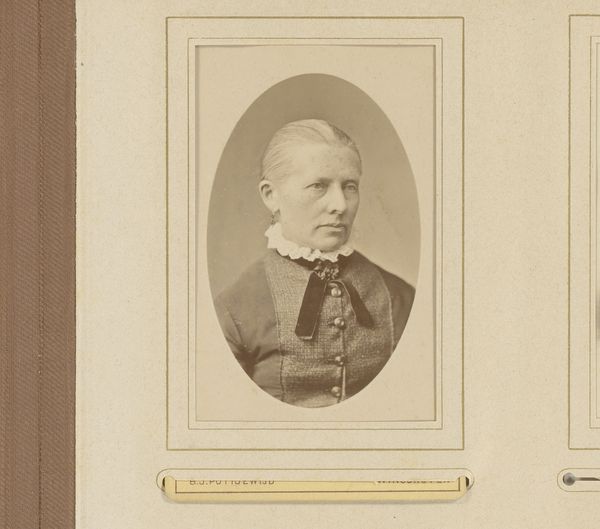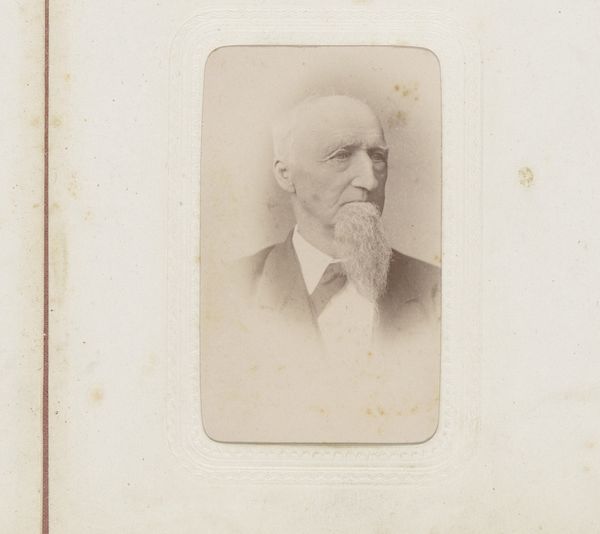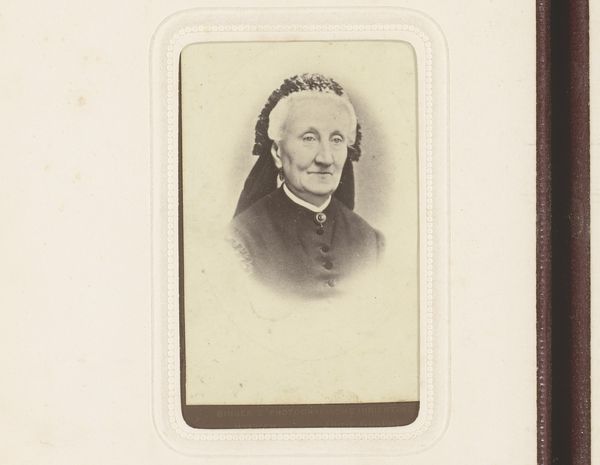
photography, albumen-print
#
portrait
#
photo of handprinted image
#
aged paper
#
toned paper
#
photo restoration
#
photography
#
yellow element
#
tonal art
#
albumen-print
Dimensions: height 83 mm, width 50 mm
Copyright: Rijks Museum: Open Domain
Editor: We're looking at "Portret van een man" by Charles Bernhoeft, likely created between 1880 and 1900 using the albumen print process. It's got such a beautifully aged quality to it, and feels incredibly formal. What historical context should we consider when viewing this portrait? Curator: Given its age and the albumen print technique, we're squarely in the era of burgeoning photographic portraiture. Consider the social role photography played then. How did it democratize portraiture previously reserved for the wealthy elite? The sitter's clothing also seems fairly somber. Editor: That makes sense. It's like photography suddenly made portraiture accessible to the middle class. This gentleman does seem rather serious, though. Is that common for portraits of this period? Curator: Precisely. There was a certain performativity inherent in early photography. How do you think societal expectations, perhaps a desire to project respectability and status, might have influenced his posture and expression? Think about the emergent middle class of that era and how they may have wanted to be perceived. Editor: It's almost like they're consciously presenting themselves in a certain way, crafting an image of themselves for posterity. The frame feels very deliberate, almost ornate in its simplicity. Does that framing device have any social meaning? Curator: Excellent point. The framing is part of that constructed image. Consider the studio setting itself – a deliberate backdrop influencing the perception of the subject. It speaks to the evolving role of the photographic studio in shaping public identity. Did portrait studios like this one offer various frames, and what social implications did that represent? Editor: So the frame is more than just decorative; it’s part of the message. I had only thought of photography in terms of its democratization of imagery. I appreciate that framing can contribute as well. Curator: Absolutely, the choices of display are equally valid to how the photographs themselves operate socially and culturally. It reveals how deeply photography was interwoven with societal aspirations and the construction of identity at the time.
Comments
No comments
Be the first to comment and join the conversation on the ultimate creative platform.
